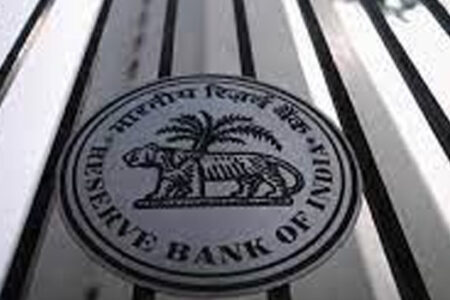As we approach the end of 2022, let’s look back at yet another eventful year for India’s financial sector — a year marked by three Cs: The relentless fight against Cryptocurrencies, CBDC (central bank digital currency) taking baby steps, and a decadal high growth of bank Credit.
The backdrop is the battle against inflation through a series of rate hikes and rationing liquidity.
Here are some figures to set the context. Retail inflation, which was 6.01 per cent in January, continued to remain above the upper band of the Reserve Bank of India’s target (4 per cent +/- 2 per cent) for 10 months in a row, before dropping to 5.88 per cent in November. At its peak, it was 7.79 per cent in April, the highest since May 2014.
In the beginning of the year, the RBI was in an accommodative mode and willing to continue with that stance as long as necessary to secure growth, but as the global financial landscape changed dramatically after Russia invaded Ukraine, it got into action. Since the first policy rate hike in May, at an off-cycle meeting, there have been five rate hikes, taking the repo rate from its historic low of 4 per cent to 6.25 per cent.
This means the policy rate has risen by 2.25 percentage points. Right? Yes and no. The central bank infuses liquidity at the repo rate and drains it through its reverse repo window. This means, in a financial system flooded with liquidity, as was the case in the past few years, technically the reverse repo rate is the policy rate. Since the reverse repo rate was 3.35 per cent, the policy rate (technically) has risen by 2.9 percentage points. It may rise further. But that’s a different story.
Liquidity in the system was Rs7.91 trillion surplus early this year; last Friday, it was in a Rs33,000-crore deficit. The 10-year bond yield, which was 6.46 per cent in January, rose to 7.62 per cent during the year; last week it closed at 7.32 per cent. The rise in the shorter end of the yield curve was far steeper. For instance, the 91-day treasury bill yield, which was 3.57 per cent in January and dropped to 3.52 per cent subsequently, rose to as much as 6.52 per cent. Last week, it was 6.36 per cent.
For the record, the Union government’s gross borrowing for the year has been at its historic high of Rs14.3 trillion.
Indeed, volatility has ruled the financial landscape this year. In January, every dollar was worth Rs74.46. The local currency even gained to 73.74 a dollar before dropping sharply to 83.26 a dollar. Last week, the rupee closed at 82.80 a dollar.
The RBI had to sell dollars to stem the fall of the rupee. As a result of this, the foreign currency reserves, which were $633.61 billion in January, fell to $524.52 billion in the third week of October. Subsequently, the pile rose to $564.07 billion before dropping to $563.5 billion in mid-December. Besides the RBI’s dollar sale, the depreciation of other currencies in its kitty vis-à-vis the greenback has also contributed to the fall in reserves.
Meanwhile, year-on-year bank deposit (till December 2) has risen 9.9 per cent — to Rs175.24 trillion even as bank credit has grown 17.5 per cent to Rs131.06 trillion. In absolute terms, growth in bank deposits has been Rs15.72 trillion, lagging behind the credit growth of Rs19.48 trillion.
Riding the credit growth, banks are recording higher income and profits never seen before. The heap of bad loans is shrinking and the provision coverage ratio — or, the money the banks set aside to take care of bad loans — is pretty high. On top of that, most banks are well-capitalised.
This is why, since January, bank stock indices — Nifty Bank and Bankex — have risen around 17.5 per cent each versus 2.73 per cent rise in Sensex and 2.6 per cent gain in Nifty. Six of the 12 government-owned bank stocks have risen at least 50 per cent since January; two among them more than 100 per cent!
Let’s talk about the other two Cs.
At Business Standard’s BFSI Summit last week, once again, RBI Governor Shaktikanta Das kept the red flag on cryptocurrencies flying, warning that the next financial crisis can be triggered by private cryptocurrencies if such speculative instruments are allowed to grow.
The private cryptocurrencies’ valuation has shrunk from $190 billion to $140 billion and there is no underlying value for the market-determined price. “It’s a 100 per cent speculative activity, and I would still hold the view that it should be prohibited. If you try to regulate it and allow it to grow, please mark my words, the next financial crisis will come from private cryptocurrencies,” Das has said.
Till recently, the stance of the government had been ambivalent. The Union Budget 2022 announced a flat 30 per cent tax on gains from cryptocurrency transactions as well as a 1 per cent tax deducted at source. In a written reply to Lok Sabha, Finance Minister Nirmala Sitharaman had said that the RBI was in favour of banning cryptocurrencies and that it had conveyed to the ministry that they cannot be considered as legal tender since they are not issued by the central bank.
The collapse of FTX in November, once valued at $32 billion and one of the world’s largest cryptocurrency exchanges handling around $1 billion transactions a day, has had a knock-on effect on other crypto exchanges. The price of Bitcoin, the most popular cryptocurrency, dropped below $16,000 in November, a year after it reached a record high of $69,000. It was trading at $16,822 over the weekend.
In October, the Financial Stability Board (FSB), an international body that monitors and makes recommendations about the global financial system, published a proposed framework for the international regulation of crypto-asset activities. It has called for a consistent and comprehensive regulatory, supervisory and oversight approach to crypto-assets and markets and strengthening international cooperation, coordination and information sharing. The recommendations were opened for public consultation till December 15.
Even though different jurisdictions are taking different stances on it, the RBI would like to stick to its stance of prohibiting them completely, Das has said at the Business Standard summit.
Finally, in 2022, India has joined the league of 50 countries that are in an advanced stage of exploring digital currency — either in the process of developing it or ready to launch pilot projects or have already launched it. The RBI has started running two pilot projects for the CBDC or e-rupee for the wholesale as well as retail segments.
Like credit card, internet banking and wallets, the CBDCs will be part of the payments system — just another way of paying for goods and services through a wallet. There are many such wallets operating in the Indian financial system. The CBDC will be one of them but with many differences.
It will be issued by the nation’s central bank and like cash the e-currency transactions will be anonymous. This will allow instant money transfers between two countries and bring down the cost of printing money, distribution and mopping up soiled notes. This is the currency of the future.



